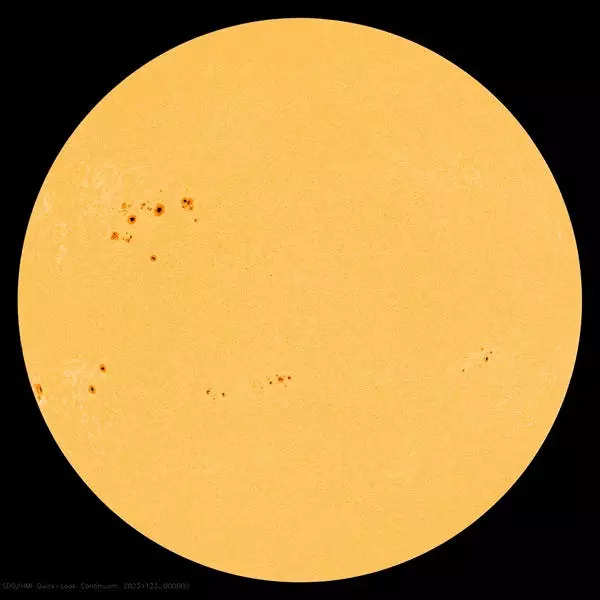- A cluster of sunspots 15 times the size of Earth rolled into view.
- These have been fizzing with activity and could send solar weather toward Earth as early as Saturday.
A cluster of sunspots has rolled into view of Earth and may send a solar storm our way as early as Saturday.
The cluster includes about a dozen sunspots that are around 125,000 miles wide— about 15 times bigger than our planet, Space.com reported.
The group is very active. It had already shot out three M-class and several C-class solar flares before it came into view, per spaceweather.com.
M-class flares are medium-sized eruptions. When directed toward Earth, they can cause brief radio blackouts, according to the European Space Agency. C-class solar flares, meanwhile, are minor and have little effect when they hit Earth.

Space-weather experts will be keeping a close eye on the cluster as it lines up with Earth, Daniel Verscharen, an associate professor of space and climate physics at University College London, told Business Insider.
“Groups of sunspots are regions that we pay close attention to. They are areas in the sun’s photosphere where the magnetic field is particularly strong and often complex,” he said.
“These complex magnetic fields are more likely to become sources of flares and mass ejections,” he said.
Simulations from the European Space Agency, using the EUHFORIA computer code, suggest that if the cluster releases a mass ejection, it could reach Earth as early as Saturday evening ET (just after midnight Sunday morning), per Verscharen.
Scientists will keep watching the cluster until it rolls away from Earth. The cluster should be in full alignment with the Earth in four to five days, Matt Owens, a professor of space physics at the University of Reading, told Business Insider in an email.
Verscharen and Owens noted that it’s very difficult to predict the strength of solar weather that could come from the sunspots — if they release any Earth-directed particles at all.
“The spots are fairly big and complex, which suggests they’re likely to produce some space weather,” said Owens.
“Sometimes huge spots produce a tonne of activity before and after they pass Earth, but nothing at that critical time when they’re pointed right at us,” he added.
As of Friday evening, the US and UK agencies that monitor space weather forecasted a low risk of any type of dangerous solar weather in the coming days.
It is the latest in a slew of bizarre observations as our sun is getting closer to a near-decadal peak of solar activity.
Scientists have recently spotted brilliant auroras, solar “tornados,” coronal holes, and more.
Solar weather is mostly harmless. The overwhelming majority of the charged particles sent by the sun are bounced back by the Earth’s magnetic field.
Every so often, solar flares and eruptions can temporarily overwhelm our planet’s protection, and most of these events can be mildly disruptive, for instance causing radio blackouts that can affect the aviation industry.
The concern is that a peak of solar activity can increase the chance of a very rare once-a-century solar stormwhich would be so strong that it could pierce through our planet’s protection and surge our infrastructure, with little advanced warning.
It’s not clear how our electrical, communication, and satellite system would fare in that scenario, as such a storm hasn’t been spotted in decades, in which time humans have become much more reliant on technology.







